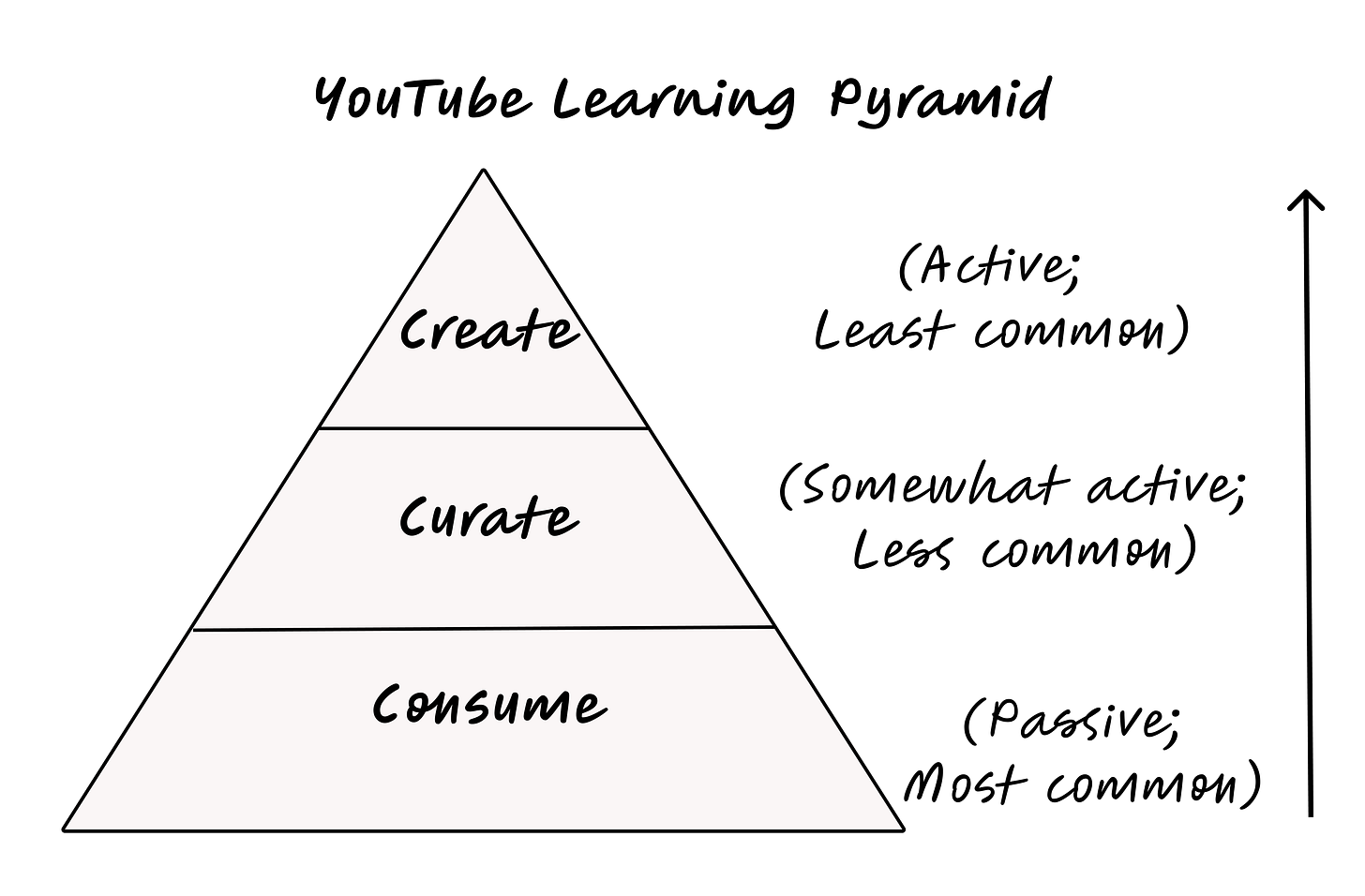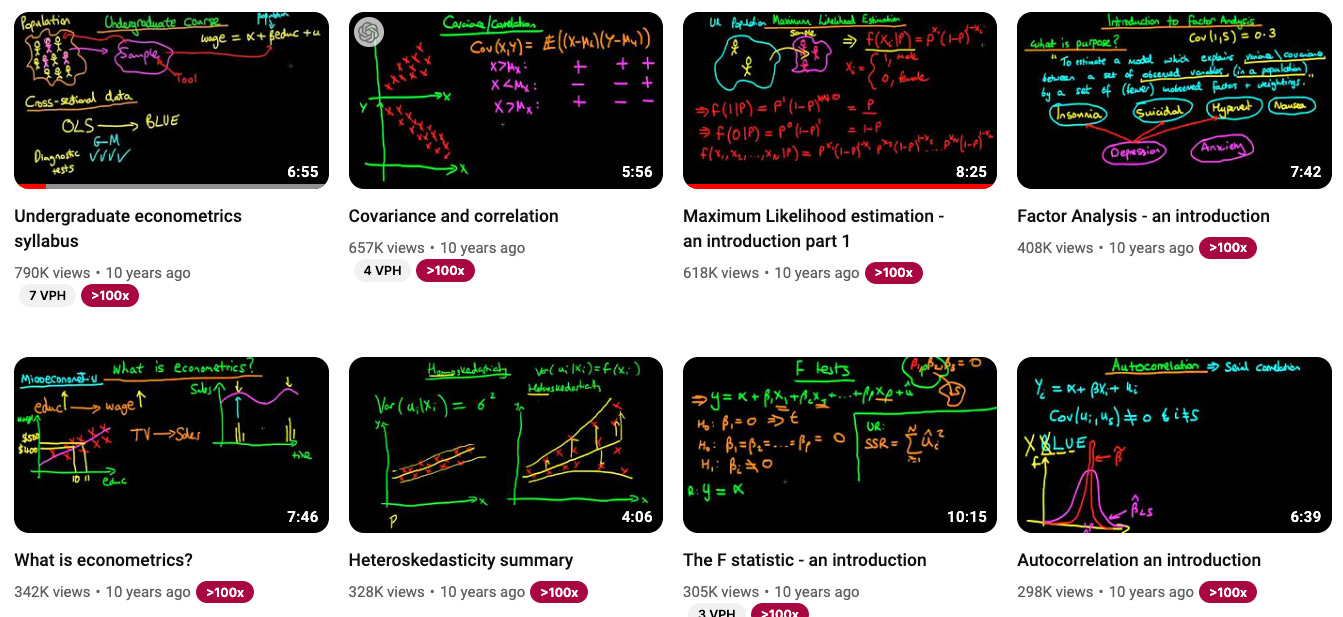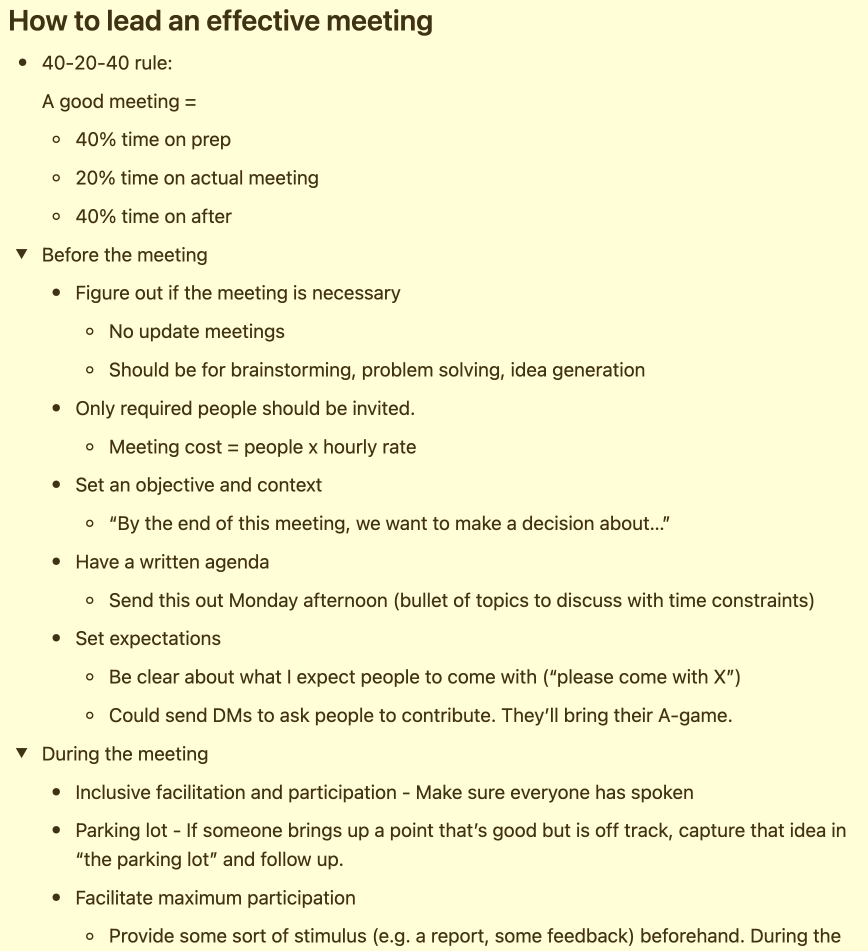YouTube helped me ace my Oxford undergraduate statistics exam.
Well, to be more precise, it was a guy called Ben Lambert - whom I've never even met.
It was a week before final exams and the stakes were high. At Oxford, students only take one set of exams at the end of their final year to determine whether they can graduate or not, so I only had one shot. I needed to get at least 70% (an A grade in the UK system) on this particular exam to proceed to the Master's programme at Oxford.
There were so many concepts that I didn't understand. In the last mock exam, I scored 52% (a C grade). So at 2am, after spending hours trying and failing to master a concept called “error correction models”, I desperately turned to the internet for help.
Ben’s YouTube videos caught my eye halfway down the results page. It seemed as though Google said to me: "Meet Ben, Ines. He's here to help."
I clicked on Ben's YouTube channel and discovered a goldmine of videos explaining concepts that eluded me. In each video, Ben screen-shared his drawing pad, wrote some figures and equations, then explained the concept in a calm British accent. He had a way of breaking down complex topics into simple, understandable chunks. And the color coding he used helped me create connections between the concepts.
Miraculously, within 20 minutes, I managed to understand the concept I’d been struggling with for 5 hours. And - more importantly - I scored a 72% on the final exam.
This moment - circa 2014 - made me realize the power of YouTube as a learning platform. Until then, I'd primarily thought of YouTube as an entertainment - rather than an educational - platform. I wouldn't have guessed that Ben's faceless videos would help me understand concepts better than my Oxford professors ever could.
Ten years later, I believe even more strongly in the power of YouTube as a learning platform. Yes, I may be biased because I work for a YouTuber. But the evidence speaks for itself: the number of educational videos on YouTube grew an estimated 18,000% (i.e. 180 times) from 2007-2016. And 51% of Americans now use YouTube to learn new things.
So in this newsletter, I want to talk about how to use YouTube as a learning platform. The “YouTube learning pyramid” (below) summarizes the 3 levels of learning on YouTube.
Level 1: Consume
The simplest way to learn on YouTube is to follow creators who make videos about topics that you care about. This is what I did with Ben Lambert.
The skill here is in finding the right people to follow. I like to pay attention to:
The title of the video: Does it contain the keywords for the topic you’re trying to learn about?
The thumbnail: This gives you a hint of the style of the video. For example, Ben’s thumbnails are all pictures of his digital writing board which suggests that he’ll be illustrating as he explains concepts.
The first 60 seconds of the video: A good video will deliver on its promise sooner rather than later. So focusing on what’s delivered in the first minute is a good indication of what’s to come.
You’ll soon discover that there are many Ben Lamberts out there for whatever you're trying to learn. For example:
Personal finance: Nischa; Damien talks money
Business: Cody Sanchez; Alex Hormozi
So, go find your “teachers” for the topics you care about.
Level 2: Curate
Level 2 of YouTube learning is to collect a series of videos for a topic you want to learn. In Level 1, I relied on Ben Lambert to put all the relevant topics for me in a playlist. In Level 2, I need to do that curation for myself. This requires some filtering, evaluating, and selecting. I might draw from different creators to select the material most relevant to my goal.
Here's a recent example of me doing "Level 2 Youtube learning". I wanted to get better at running meetings, especially Zoom meetings. I had a bunch of questions on this topic: How do I run an effective yet creative meeting? How do I make sure everyone feels included and says something? How do I convey energy on screen?
I searched through YouTube and stumbled across several videos created by different YouTubers on the topic. Some were more informative than others. I created a YouTube playlist called "Fun & Effective Meetings". Then, I started adding useful videos to that playlist.
I then turned this playlist into a set of notes that now looks something like this:
It's an evolving playlist and an evolving set of notes. Whenever I see a video that's of interest, I add it to the collection. And whenever I'm about to lead a big meeting, I pick a video from that playlist at random and play it. It does wonders when I'm feeling particularly nervous about leading a meeting.
Level 3: Create
And now we come to the final level of YouTube learning: creating content. By "creating content", I don't mean that you should become a YouTuber. I mean that you should create a video explaining the thing you're trying to learn. You can publish these videos as "unlisted" videos (so only people with the right link can watch it).
This act of explaining something to someone else is one of the most effective ways to learn. In educational psychology, it's called "learning by teaching" or "The Protegé Effect".
It's easy to let the lack of equipment - a fancy camera, mic, studio setup - hold you back. But it shouldn't. Here are some low-lift ways you can do Level 3 YouTube learning:
Do a “how to” walk-through using Loom (I used Loom a lot to do coding demos and tutorials - especially during the pandemic)
Screenshare your iPad or drawing pad like Ben Lambert
Record yourself doing a powerpoint presentation
Film yourself in front of a whiteboard
Try it yourself
This week, follow these 3 simple steps to level up your YouTube learning:
Pick something you're currently learning or want to learn
Determine which level you're currently at on the YouTube Learning Pyramid
List down some concrete actions you can take to reach the next level.








